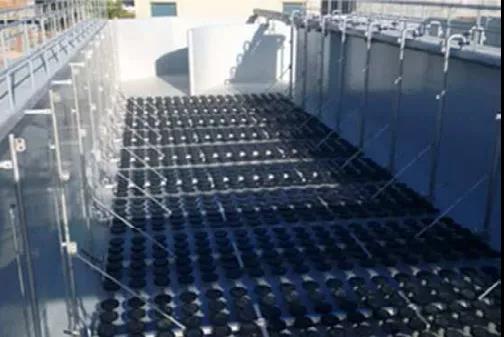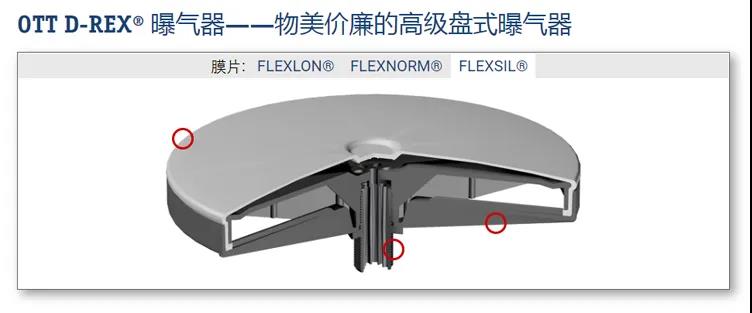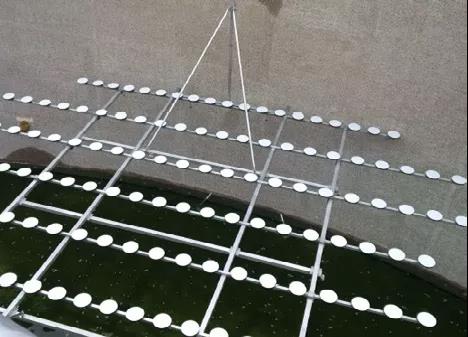Comparison of membrane performance differences in OTT aerators
1. Material performance and applicable working conditions
The D-REX disk of OTT and the tubular membrane material of MAGNUM are mainly divided into two types: rubber membrane and silicone rubber membrane. The two types of aerator membranes have different product performance and applicable working conditions.
OTTFLEXNORM rubber film:
A copolymer of ethylene, propylene, and a small amount of non conjugated diene is a type of ethylene propylene rubber.

1. Performance advantages
High cost-effectiveness of materials.
2. Performance drawbacks
Poor stability and fast natural aging rate in aliphatic and aromatic solvents (such as gasoline, benzene, etc.) and mineral oils. Short service life, prone to membrane blockage in the later stage, increased energy consumption, and fan tripping caused by excessive pressure. Poor high temperature resistance can accelerate aging, especially when the temperature exceeds 60 ℃.
3. Applicable working conditions
Applied to small and medium-sized municipal domestic sewage, it performs poorly in industrial sewage with complex water quality. Generally, the service life of municipal sewage is about 5 years. In projects that have the conditions for shutdown, drainage and replacement on site, the initial investment cost is slightly lower.

OTTFLEXSIL Silicone Membrane: As a slightly higher priced rubber material, the main chain is composed of alternating silicon and oxygen atoms


in summary:
The FLEXSIL silicone membrane of OTT has more anti-aging capability. The resistance change of the membrane for municipal sewage in 10 years is still very small, and the performance of the membrane for industrial sewage in 5 years is not significantly reduced. For large sewage treatment plants, compared to EPDM products, it can save 100% of the enterprise's consumption every year.
Under various conditions, silicone aeration products can achieve better results than rubber products, especially widely used in large municipal and industrial wastewater. Its performance is far superior to that of rubber aeration membrane sheets in terms of product life stability, anti clogging, energy saving and consumption reduction, and operation and maintenance.










